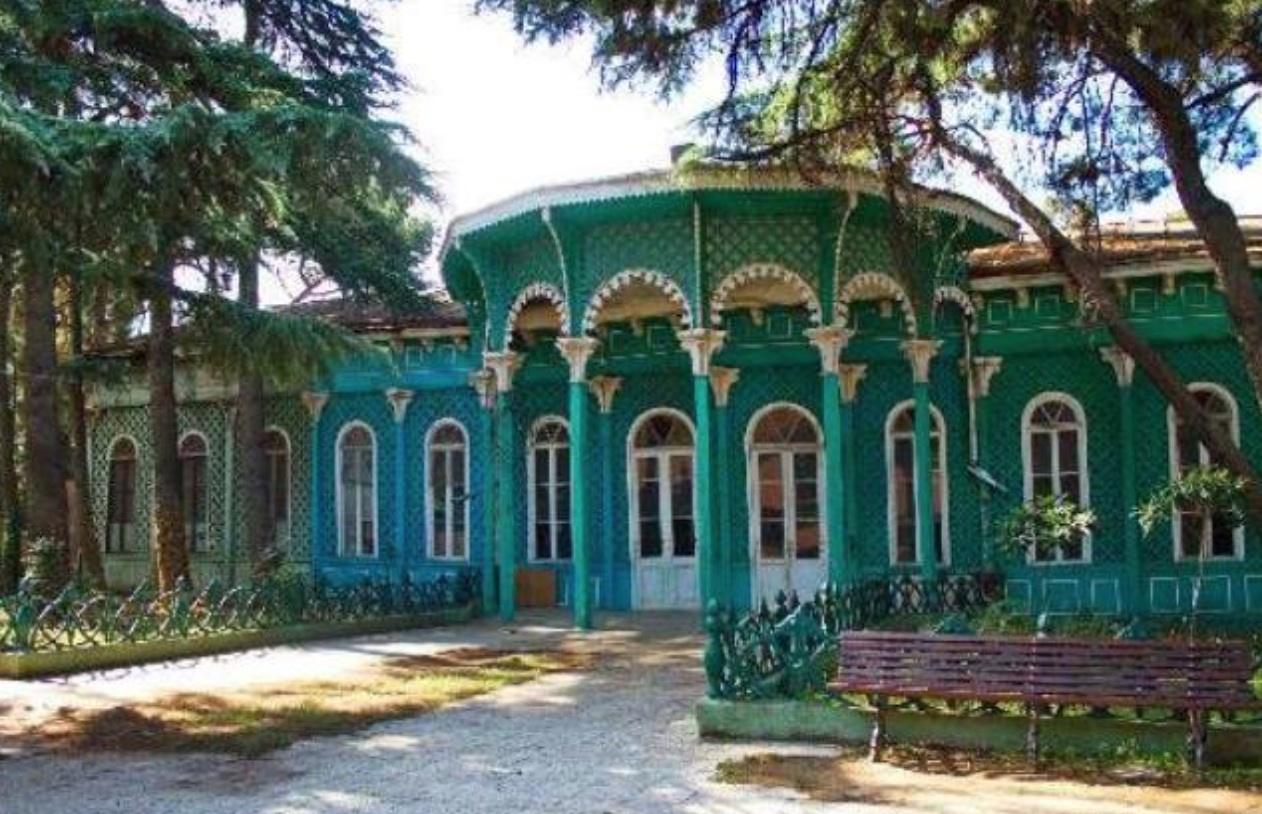The Mushtaid Garden in Tbilisi (see more about this garden/park in the Georgia About webpage) was established in the 1830’s by Mir-Fatah-Agha who was originally from Iran. By the 1830s Georgia had been fully incorporated into the Russian empire. This was made possible by forcing Qajar-ruled Iran to relinquish her Caucasian territories to the Czarist Russians. Iran signed the Treaty of Gulistan (September 24, 1813) after her defeat in the first Russo-Iranian war (1804-1813) and the subsequent Treaty of Turkmenchai (February 21, 1828) after the second Russo-Iranian war (1826-1828). As a result of these defeats, Qajar-ruled Iran was to permanently lose her territorial links to eastern Europe. For more on the Russian-Iranian wars of the early 19th century consult Kaveh Farrokh’s third text “Iran at War 1500-1988“.
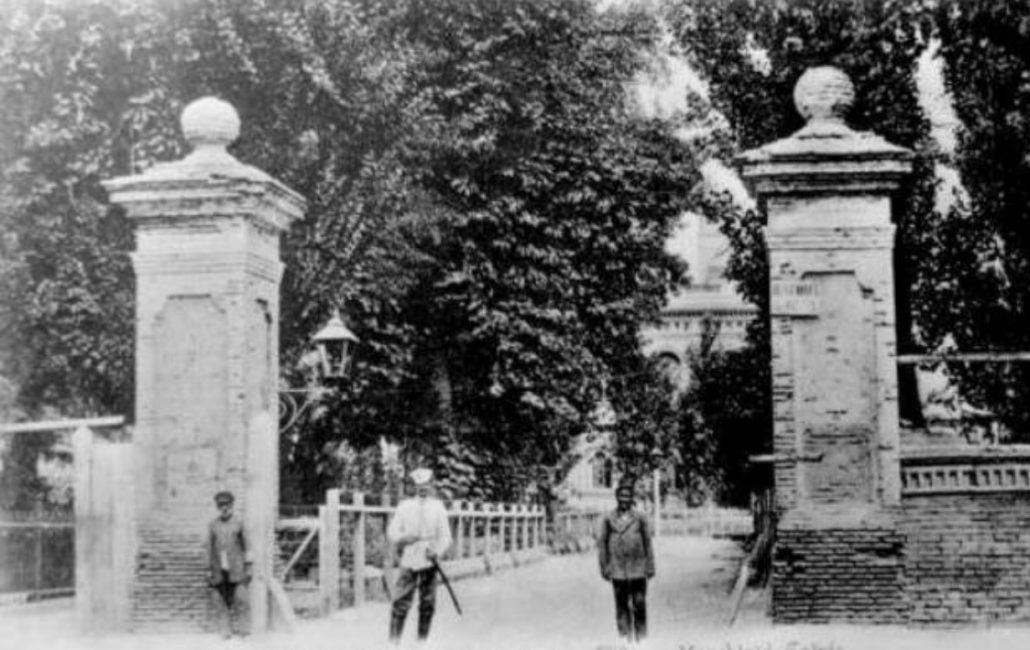
Entrance gateway into the Mushtaid Garden in Tbilisi in the late 19th century (Source: Georgia About).
Mir-Fatah-Agha was a mujtahid (Persian: religious leader) – hence the name Mushtaid for the garden. After Nino (Mir-Fatah-Agha’s Georgian wife), passed away of an illness, Mir-Fatah-Agha buried her close to his house and had roses planted around her resting place. This became the foundation for the future Mushtaid (Mujtahid) park, which became an official public park by 1858.
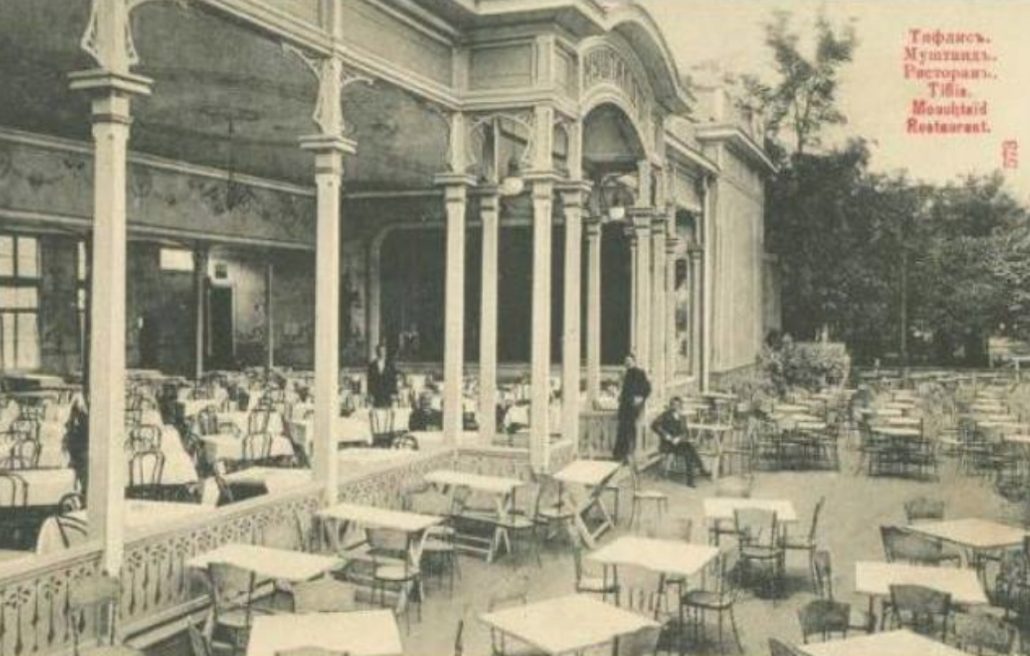
Public restaurant in the Mushtaid Garden of Tbilisi in the late 19th century (Source: Georgia About).
A key question that arises is how (or why) did the Russians decide to grant this prime real estate in one of Eastern Europe’s most lush regions to an Iranian national? This would seem interesting given that the Russians had fought so hard to wrest the entire Caucasus from the Iranians in the early 19th century. The reason the Russians did this is because Mir-Fatah-Agha had greatly helped the Russian empire’s military campaign against his homeland. Mir-Fatah-Agha had been accused of spying during the Russian-Iranian wars and expelled from Iran in 1828, the same year the Treaty of Turkmenchai was signed between imperial Russia and Qajar-ruled Iran.
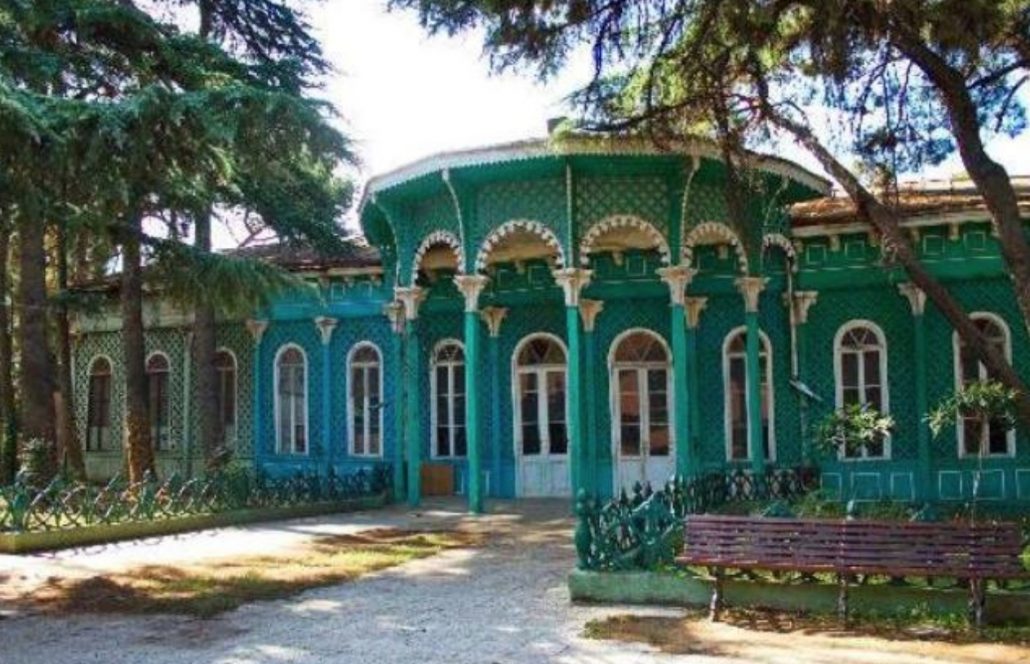
A view of the Mushtaid (Mujtahid) Garden as it appears today in Tbilisi. As noted in the Georgia About website: “The famous Georgian artist Niko Pirosmani (Niko Pirosmanashvili) (Georgian: ნიკო ფიროსმანი) saw French dancer/actress Margarita perform in Mushtaid Garden in 1905. He was immediately besotted and it is said that he sold everything he owned to buy thousands of roses that were strewn in front of Margarita’s hotel.”
In appreciation of Mir-Fatah-Agha’s services to their empire, the Russians not only granted him asylum but also rewarded him with five hectares of land in Tbilisi (known as Tiflis in Persian and during the time of the Russian Empire).
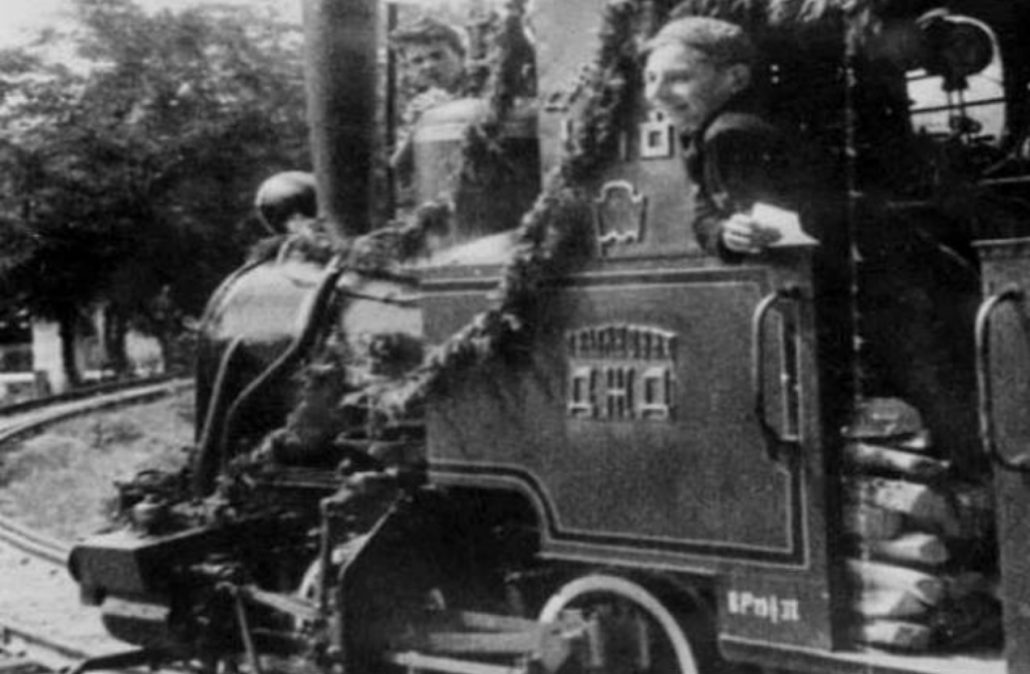
Children’s railway in the Mushtaid garden or park of Tbilisi. As noted in the Georgia About website: “The first children’s railway in the world was opened in Mushtaid Garden on 24th July, 1935. Operating on a 1.2 km track, it was a narrow-gauge railway, complete with real wagons and locomotives.”
Nevertheless the case of Mir-Fatah-Agha should be considered in context. While more studies are needed in this topic, it would appear that the Qajar era (1789–1925) witnessed the rise of rampant self-interest among government officials and religious clergy (Mullahs and/or Mujtahids). The primary motivation in almost all of these cases was to acquire more wealth, property, recognition and influence. This was so transparent that British officials soon realized that they could easily buy off (often at a relatively low price) most Iranian government officials and clergy (Mullahs). This has been duly noted by Christopher Andrew in his book “Her Majesty’s Secret Service: The Making of the British Intelligence Community” (London, Penguin Books, 1987):
“The Long drawn-out ‘Great Game’ with Tsarist Russia…reached its peak in the later nineteenth century, gave rise to an equally long drawn-out series of intelligence operations…the Foreign office…particularly in Persia which acquired growing importance in British eyes…The Mullahs, who were the main authority within the country, proved vulnerable…to the ‘Cavalry of St George’. Sir Charles (later Baron) Hardinge, who became British Minster at Tehran in 1900, quickly concluded that there were few Persian clerics ‘whose religious zeal is proof against bribes’. The bribes to both Mullahs and civil officials sometimes took unusual forms: among them hyacinth bulbs, cigars, colored spectacles, silver clocks and – on one occasion – an artificial limb presented to a Persian brigand who had lost an arm in an attack on a caravan. The Marquess of Lansdowne, the foreign secretary … in Persia … acknowledged, he had ‘not hesitated to use secret service money’.”
[Andrew, 1987, Pages 5-6]
In this context Mir-Fatah-Agha, a Mojtahed, was simply acting as many of his Qajar-era contemporaries would have acted: immediate self-interest even if it meant cooperation with a national adversary.

